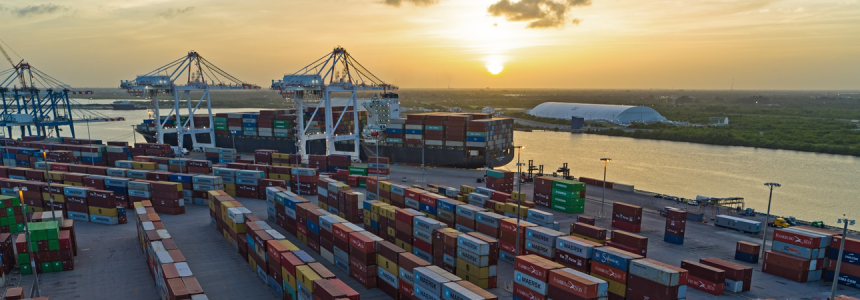News & Updates
USACE Authorizes Port Tampa Bay’s GRR Study to Deepen Channel

The U.S. Army Corps of Engineers signed off on the port’s General Reevaluation Report to deepen its shipping channels. The move paves the way for the main portions of the navigable waterways that service Port Tampa Bay to deepen from 43 to 47 feet. The Tampa Harbor Navigation Improvement Study began three years ago prior to being approved on Aug. 14, 2024.
“Today is a pivotal moment for Port Tampa Bay. The signing of the Chief of Engineers’ report by Lt. General Scott A. Spellmon brings us a step closer to unlocking greater economic potential and enhancing our region’s status as a leading gateway for global trade. This project will not only deepen our navigational channels but also deepen our commitment to supporting the thriving Tampa Bay region, the state of Florida, and beyond.
“By enabling a deeper navigational channel, we increase our capacity, remain globally competitive, and reaffirm our commitment to fueling the economic engine of our region,” explains Paul Anderson, Port Tampa Bay President and CEO.
Port Tampa Bay, Florida’s largest and most diversified seaport, handled over 35 million tons of cargo during FY2023. The deepening of the channel will complement a container build-out program that has helped Port Tampa Bay establish itself as a supply chain solution and emerging container port, its fastest growing line of business. Along with container terminal operator Ports America, the port has secured the addition of three post-Panamax cranes (bringing the port’s total to five), added a new expanded container gate, is expanding paved storage to a total of 100 acres and building a third deep-water berth.
Florida is now the third most populous state in the U.S., home to 23 million residents and welcoming more than 140 million visitors per year. The Tampa Bay/Orlando I-4 Corridor region is the state’s largest consumer market, as well as its fastest-growing region, and has become Florida’s primary distribution hub. The Port’s central location in the geographic center of the state minimizes truck delivery costs and allows for same-day coverage of the entire state. Now that the Chief’s Report has been approved, the study goes to the U.S. Congress for approval within the Water Resources Development Act. The deepening of the channel will eventually be funded through a combination of federal, state, and local dollars.
